NCERT Solutions for Class 7 Maths
Chapter 3 Data Handling
Exercise 3.3
1. Use the bar graph (Fig 3.3) to answer the following questions.
(a) Which is the most popular pet? (b) How many students have dog as a pet?
Answer
(a) From the given graph,
It is clear that the bar representing cat is the highest i.e. 10. Therefore, cat is the most popular pet.
(b) From the given graph, it is clear that 8 students have dog as a pet.
2. Read the bar graph (Fig 3.4) which shows the number of books sold by a bookstore during five consecutive years and answer the following questions:
(i) About how many books were sold in 1989? 1990? 1992?
(ii) In which year were about 475 books sold? About 225 books sold?
(iii) In which years were fewer than 250 books sold?
(iv) Can you explain how you would estimate the number of books sold in 1989?
Answer
From the given graph, we have
(ii) About 475 books were sold in the year 1990.
(iii) In the year 1989 and 1992, fewer than 250 books were sold.
(iv) From the bar-graph, it is clear that number of books in 1989 is 180 (approx). We can see in the bar graph that the number of books sold in 1989 is little less than 200 but greater than 175.
3. Number of children in six different classes are given below. Represent the data on a bar graph.
| Class | Fifth | Sixth | Seventh | Eighth | Ninth | Tenth |
| Number of Children | 135 | 120 | 95 | 100 | 90 | 80 |
(a) How would you choose a scale?
(b) Answer the following questions:
(i) Which class has the maximum number of children? And the minimum?
(ii) Find the ratio of students of class sixth to the students of class eight.
Answer
(a) We start the scale from 0. The greatest value of data is 135, so end the scale at a value greater than 135 such as 140. Use equal division along axes such as increment of 10. Here, we take 1 unit for 10 children.
Now, the graph is shown as below
Scale: 1 unit 10 children
(b) (i) From the graph,
Maximum number of children in class fifth i.e. 135.
and minimum number of children in class tenth i.e. 80
Number of students in sixth class = 120
Number of students in eighth class = 100
∴ The required ratio = Number of students in sixth class/Number of students in eighth class
4. The performance of a student in 1stTerm and 2nd Term is given. Draw a double bar graph choosing appropriate scale and answer the following:
| Subject | English | Hindi | Maths | Science | S. Science |
| 1st Term (M.M. 100) | 67 | 72 | 88 | 81 | 73 |
| 2nd Term (M.M. 100) | 70 | 65 | 95 | 85 | 75 |
(i) In which subject, has the child improved his performance the most?
(ii) In which subject is the improvement the last?
(iii) Has the performance gone down in any subject?
Answer
The double bar graph is shown below
(i) We have, marks increased in English = 70-67=3
Marks increased in Hindi = 65 – 72 =-7
Marks increased in Maths = 95-88 = 7
Marks increased in Science = 85 -81 = 4
Marks increased in S. Science = 75-73 =2
Hence, the child improved his performance in Maths the most, i.e. 7 marks.
(ii) From part (i), it is clear that the child has improved his performance the least in S. Science, i.e. 2 marks
(iii) Yes, the performance has gone down in Hindi, i.e. -7 marks.
5. Consider this data collected from a survey of a colony
| Favourite Sport | Cricket | Basket Ball | Swimming | Hockey | Athletics |
| Watching | 1240 | 470 | 510 | 430 | 250 |
| Participating | 620 | 320 | 320 | 250 | 105 |
(i) Draw a double bar graph choosing an appropriate scale. What do you infer from the bar graph?
(ii) Which sport is most popular?
(iii) Which is more preferred, watching or participating in sports?
Answer
(i) Required ‘double bar graph is shown below
It is inferred that more people prefer cricket and less athletics.
(ii) Watching is more preferred than participating in sports.
6. Take the data giving the minimum and the maximum temperature of various cities given in the beginning of this Chapter (Table 3.1). Plot a double bar graph using the data and answer the following:
(i) Which city has the largest difference in the minimum and maximum temperature on the given date?
(ii) Which is the hottest city and which is the coldest city?
(iii) Name two cities where maximum temperature of one was less than the minimum temperature of the other.
(iv) Name the city which has the least difference between its minimum and the maximum temperature.
Answer
Plotting a double bar graph is shown below as below
From the Graph.
(ii) Jammu is the hottest city (41°C) and Bangalore is the coldest city (21°C).
(ii) Bangalore and Jaipur are two cities of such type.
(iv) Mumbai has the least difference between its minimum and the maximum temperature.
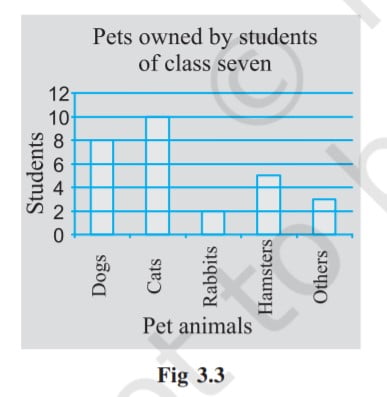
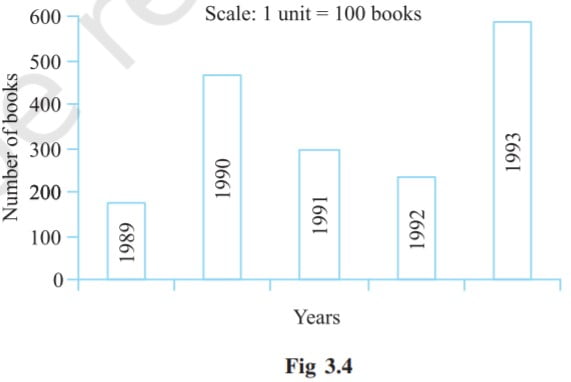
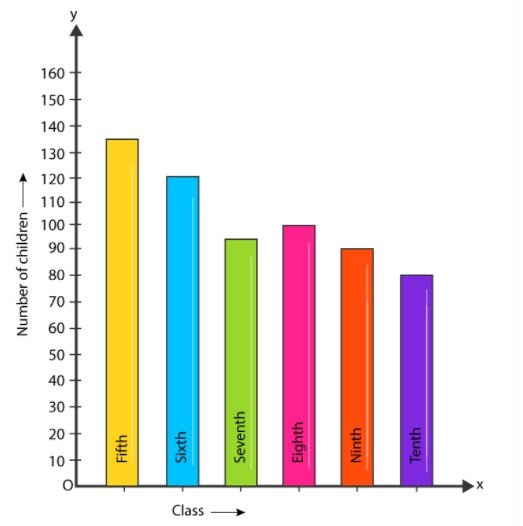
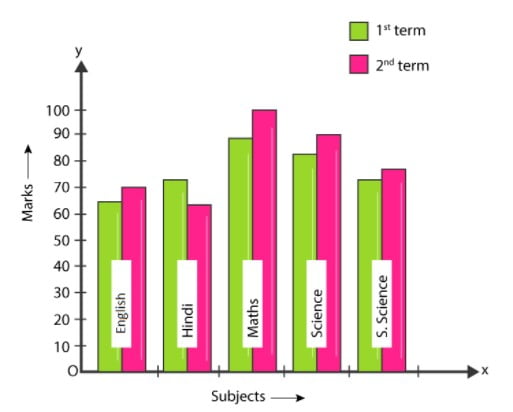
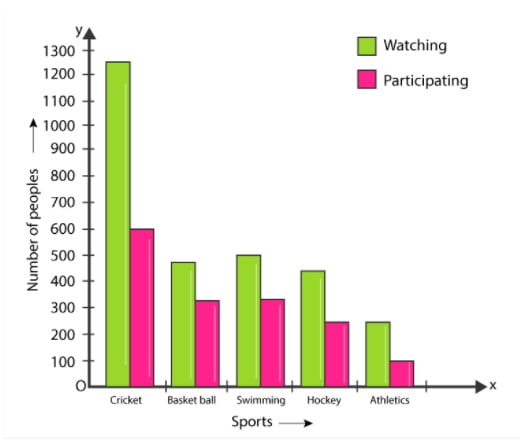
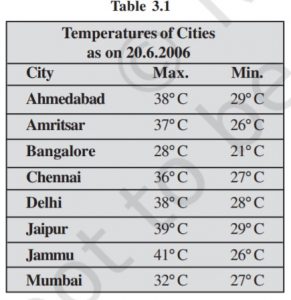
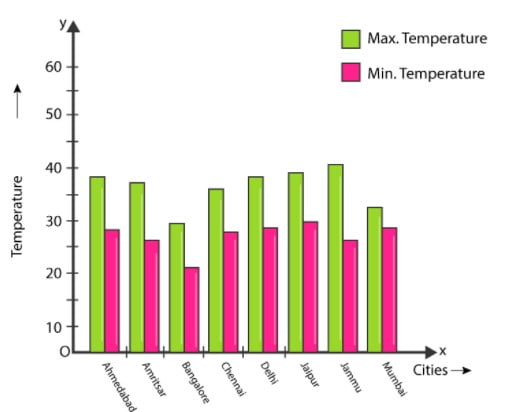
Leave a Reply